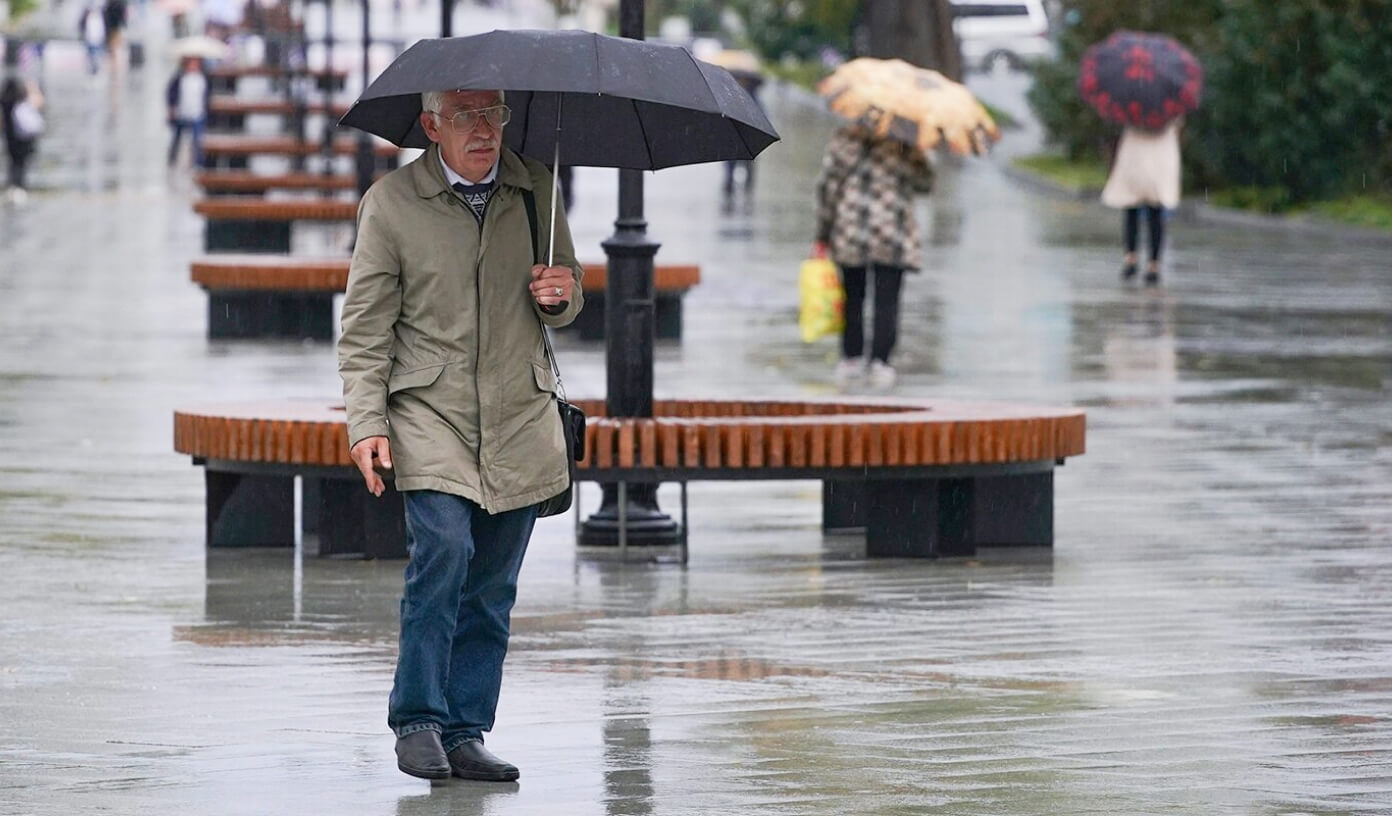The climate crisis is gaining momentum, and its devastating effects are being felt in every part of the world. Extreme heat waves, droughts, floods, fires, and high winds are just a small part of what cities have to adapt to. How is this task being tackled in Moscow?
Moscow strategy
Anton Kulbachevsky, the head of the Department of Natural Resources Management and Environmental Protection of Moscow, said that the scale of the consequences of climate risks is second only to the COVID-19 epidemic. Delay is unacceptable, so the capital acts simultaneously in two ways: reduce greenhouse gas emissions and adapt the urban environment to the new climate realities. These measures will help avoid damages of more than 200 billion roubles and save thousands of lives.
 Photo: press service of the Moscow Mayor and Moscow Government
Photo: press service of the Moscow Mayor and Moscow Government
Abnormal heat
Alexander Shuvalov, head of the Meteo forecasting centre, said that August 2022 in Moscow broke all the temperature records of the 21st century. Sensors have been installed at each underground station to monitor the temperature. When it gets too hot, the tunnels are cooled by increasing the airflow in the ventilation system. This helps reduce the temperature by 2-3 degrees. And if the thermometer does not drop below 28°C, bottled water is distributed among passengers free of charge.
Air conditioning units have been installed in surface public transport. Their operation is checked before each trip to the route. If an air conditioner breaks down during the day, passengers can report it on the Moscow Transport app.
In hot weather, careless handling of fire is especially dangerous — just one spark can be the start of a major fire. Firefighters and rescuers patrol park and woodland areas and protected areas every day. This makes it possible to detect blowing grass, burning rubbish, campfires in unauthorised areas and smouldering cigarette butts in good time. In addition, the patrols check that natural areas have been cleared of dead wood, dry vegetation and litter.
Thanks to these measures, the Russian capital was well protected from the climatic anomaly of August 2022. There were no serious heat-related incidents in the city. There were no fires in natural areas within the metropolitan area either.
Moscow Venice
Periods of heat alternate with abnormal rains. To minimize the risk of street flooding, about 360 kilometers of underground storm sewers were reconstructed in Moscow. Specialists identified 2,252 waterlogged areas and increased the capacity there by laying additional drains or positioning pipelines at an incline.
The renewed storm drainage system has already repeatedly passed the test of strength. In July 2022, for example, the city got more than a third of the monthly rainfall in just one hour. Some streets turned into raging rivers, but by the evening all the consequences of the downpour had been eliminated.
 Photo: press service of the Moscow Mayor and Moscow Government
Photo: press service of the Moscow Mayor and Moscow Government
The icy rains
In recent decades, the duration of cold weather in Moscow has decreased. In 1879, the winter period lasted 155 days, while in 2016 it lasted only 120 days. Global warming has made the capital’s climate unstable. There has been an increase in the number of natural hazards, including icy rain — precipitation in the form of water droplets covered with a crust of ice. When they come into contact with hard surfaces, they break and freeze again, forming a thick layer of ice. In December 2010, freezing rain caused a traffic collapse, killed about 50,000 trees and severed power lines, leaving more than 400,000 people without power.
To reduce the damage from this natural phenomenon, the electrical wires were taken underground. Airfield runways are cleaned of snow and ice, and then treated with reagents to prevent ice formation. Sidewalks and pedestrian zones are sprinkled with granite chips and sand, as reagents are washed away during the rains. Emergency supplies of crushed granite are stored in red and orange containers placed near public transportation stops. Janitors and workers engaged in street cleaning take it from there as needed.
Difficulties in adapting to the new reality
Adapting to global warming does not always go according to plan. In the summer of 2022, Europe was hit by a wave of abnormal heat. The worst thing happened to the inhabitants of Great Britain: on July 18, the air in London heated to 40 degrees Celsius — a historical record. For the first time, a red (highest) danger level was declared in the country.
Most homes in London do not have air conditioning — in the rainy and foggy climate they were not needed. And those who have a source of lifesaving coolness cannot use it because of the need to save energy. It is not a question of frugality, but of survival — amid the difficult political situation, electricity prices are rising and may soon be unaffordable for the average Londoner. Mayor Sadiq Khan addressed the government to intervene and fix the rates, because otherwise millions of Britons risk being left without heating in winter.
The abnormal heatwave in the UK has led to numerous fires. They could not be extinguished in time: the fire destroyed dozens of homes. The problem is unpreparedness — dramatic climate change has caught firefighters, whose staff were cut by 20% in 2010.
Another trouble hitting the country is low yields. For example, Vernon Mascarenhas, who wholesales local fruits and vegetables, complained that some crops, such as peas, beans, and leaf lettuce, did not survive the heat. Mascarenhas also noted that apples and pears may produce smaller and more sour fruit than usual. On the plus side, though, you can now grow “southern” crops, such as apricots, in Britain.
Londoners risk drowning in their homes
London, like many other cities, was threatened by widespread flooding. In February 2022, when the River Thames burst its banks, hundreds of people had to be evacuated. Bob Ward, deputy representative of the London Climate Change Partnership expert center, noted that the Victorian-era drainage system cannot cope with worsening weather conditions, and NASA estimates that almost all areas of London, located on the banks of the Thames, will be flooded.
British people living underground are of particular concern. Wealthy residents of densely populated London have built multi-story structures with elevators under their houses. In addition to rooms there are swimming pools, garages, wine cellars, gyms, and karaoke. But the city authorities fear that if these rooms flood, the elevators will stop working and people won’t have time to get to the surface. This problem is relevant not only for London, but also for other cities in England.
Author: Vera Zhikhareva
Cover photo: NEIL HALL / EPA








Comments